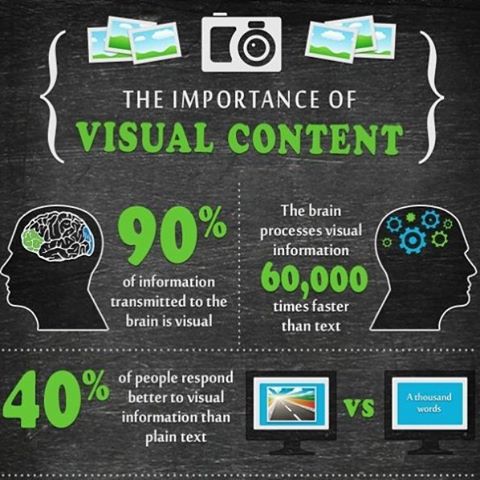Revolutionize Your Brand's Online Presence with a Winning Content Marketing Strategy: Insights, Services, and Tips for Success.
When it comes to digital marketing, content is king. A well-crafted content marketing strategy can help businesses reach their target audience, build brand awareness, and drive conversions. However, with so many brands vying for attention in the crowded digital space, standing out can be challenging. That’s why we’ve created this comprehensive guide to Content Marketing.
In this post, we’ll explore the ins and outs of content marketing, from defining your goals and identifying your target audience to creating high-quality content that resonates with your audience and optimizing it for SEO. This guide will provide you with actionable insights and strategies that will help you take your content marketing to the next level. So, let’s dive in and unveil the secrets to a winning content marketing strategy.
Understanding the Importance of Content Marketing Strategy
In today’s digital age, content marketing has become an essential component of any successful marketing strategy. The term “content marketing” refers to the process of creating and distributing valuable, relevant, and consistent content to attract and retain a clearly defined audience — ultimately, to drive profitable customer action.
Unlike traditional marketing, which is focused on promoting products or services through advertising, content marketing aims to provide valuable information to customers to build trust and establish brand authority. By consistently producing high-quality content that resonates with their target audience, businesses can build brand awareness, improve lead generation, and establish trust with their customers.

One of the key benefits of having a solid content marketing strategy is increased brand awareness. By producing and sharing content that is aligned with your brand values, you can attract new customers and expand your reach beyond your existing audience. Additionally, content marketing helps to establish you as a thought leader in your industry, further enhancing your brand image and reputation.
Another important benefit of having a content marketing strategy is improving lead generation. By creating content that appeals to your target audience’s interests and needs, you can generate leads and nurture them through the sales funnel until they are ready to make a purchase. This requires gaining a deep understanding of your target audience’s pain points, interests, and preferences, and producing content that speaks directly to those needs.
So, how do you create an effective content marketing strategy? It starts with defining your goals, identifying your target audience, and understanding what types of content will resonate with your audience. You also need to determine your brand voice and messaging to ensure that your content is consistent with your brand values. From there, you can develop a content calendar and regularly produce and distribute content across various channels, such as social media, email marketing, and blogs.
Examples of successful content marketing campaigns abound. For instance, Airbnb’s “Belong Anywhere” campaign, which included an interactive microsite, videos, and social media content, helped the company increase brand awareness and establish itself as a trusted player in the hospitality industry.
Investing in Professional Content Marketing Services
Creating high-quality content on a consistent basis is a challenging task, especially for businesses that don’t have the internal resources to handle it. That’s where professional content marketing services come in — they can help you create and execute a content marketing strategy that drives results while freeing up time to focus on other areas of your business.
One of the primary benefits of investing in professional content marketing services is improved content quality. A team of writers, designers, and strategists can work together to produce high-quality content that resonates with your target audience and is optimized for search engines. With a team of experts at your disposal, you can create content that is both engaging and effective.
Another advantage of outsourcing your content marketing needs is saving time and resources. By partnering with a professional service provider, you can free up internal resources to focus on other aspects of your business, such as product development or customer service. This can help you scale your business more efficiently and effectively.

When choosing a professional content marketing services provider, it’s important to consider a range of factors. Look for a person or team with experience and expertise in your industry, and be sure to review their portfolio and case studies to ensure that they can provide the services you need. It’s also important to evaluate their pricing model to ensure that it aligns with your budget and goals.
There are a variety of professional content marketing services available, including content creation, social media management, SEO optimization, and email marketing. By outsourcing your content marketing needs to a team of experts, you can benefit from their skills and experience while freeing up resources to focus on other areas of your business.
Crafting Creative Content that Captivates Your Audience
Creating content that captures your audience’s attention and keeps them engaged can be a daunting task, but it’s essential for successful content marketing. To stand out in the crowded digital landscape, you need to create content that is not only high-quality, but also creative and captivating.
So, how do you craft creative content that captivates your audience? Here are some tips and best practices to keep in mind:
Before you start creating content, it’s important to understand your target audience. What are their pain points? What are their interests and preferences? By gaining a deep understanding of your audience, you’ll be able to create content that resonates with them and keeps them engaged.
Your brand voice is what sets you apart from your competitors. Develop a unique brand voice that reflects your brand values and personality. This will help you establish a consistent tone across all your content and make your content more memorable.
Storytelling is a powerful way to engage your audience and make your content more memorable. Use storytelling techniques to connect with your audience emotionally and convey your message in a compelling way.
Visual content is more engaging than plain text. Incorporate images, videos, and other visual elements into your content to make it more visually interesting and appealing.
Attention spans are short in today’s fast-paced digital world. Keep your content concise and to the point to avoid losing your audience’s attention.
Your audience is looking for content that provides value. Whether it’s providing information, solving a problem, or entertaining, make sure your content offers something of value to your audience.
Don’t be afraid to experiment with different content formats, such as blog posts, videos, infographics, and social media posts. Different formats can help you reach different audiences and keep your content fresh and interesting.
Understanding the Value of Visual Content

Visual content has become an essential component of any successful marketing strategy. It is a type of content that uses images, videos, or other visual elements to convey a message or tell a story. The value of visual content cannot be overstated because it is more memorable, engaging, and shareable than text alone. Visual content increases brand awareness, improves understanding, and enhances the overall effectiveness of your marketing campaign.
Visual content makes information more memorable because people remember 80% of what they see compared to just 20% of what they read. This means that incorporating visual elements into your content can increase the chances that your audience will retain your message. Moreover, visual content is more engaging and captures your audience’s attention. It encourages them to interact with your content, ultimately resulting in better engagement rates.
Visual content is also more likely to be shared on social media than text alone. This is because visuals are more eye-catching and interesting, making it more likely that your audience will want to share it with their own followers. Additionally, visual content enhances branding by creating a consistent visual identity that resonates with your audience.
There are many ways to incorporate visual content into your marketing strategy. Infographics, videos, and images are just some examples. By incorporating visual elements into your marketing campaigns, you can enhance your brand awareness and create more effective marketing campaigns.
Reading More – 10 ESSENTIAL TACTICS FOR OPTIMIZING YOUR LOCAL SEO
Tracking and Analyzing Your Content Marketing Results
As a content marketing expert, I understand the importance of tracking and analyzing results in any content marketing campaign. Tracking and analyzing your content marketing results helps you understand what works and what doesn’t, enabling you to improve your strategies and tactics for better ROI. It is important to track key performance indicators (KPIs) because they provide insights into how your content is performing and how it is affecting your business.
Here’s a step-by-step process for measuring KPIs and evaluating the data derived at each stage:
01
Define your goals
The first step in tracking and analyzing results is to define clear goals for your content marketing campaign. What do you want to achieve? Is it increased brand awareness, lead generation, or sales? Defining your goals will help you choose relevant KPIs for your campaign.
04
Collect Data
With tracking and analytics tools in place, start collecting data on your KPIs. Track the performance of your content across various platforms, including social media, email, and your website. Collect data regularly so that you can observe trends and patterns.
02
Determine Your KPIs
Once you have defined your goals, identify the KPIs that will help you measure progress towards those goals. For example, if your goal is to generate leads, then your KPIs might include website traffic, conversion rates, and lead quality.
05
Analyze Results
After you have collected data on your KPIs, analyze the results to determine what is working and what is not. Look for trends and patterns in your data, identify areas where you are falling short of your goals, and assess your ROI.
03
Set up Tracking and Analytics
To track your KPIs, you need to set up tracking and analytics tools such as Google Analytics, SEMRush, Hubspot, or Ahrefs. This will allow you to monitor your KPIs in real-time and track changes over time
06
Optimize Your Strategy
Based on the insights you gain from analyzing your results, optimize your content marketing strategy. Make changes to optimize your content, channels, and tactics for better ROI.
Below are a few recommendations that you should use while doing content marketing:
- Use A/B testing to compare the performance of different strategies and tactics
- Regularly review your content marketing strategy and refine it based on insights gained from tracking and analyzing results
- Use automation tools like Hootsuite, Buffer, or Sprout Social to manage your social media campaigns more efficiently
- Set realistic and relevant goals that align with your overall business objectives
- Continually measure and track KPIs to identify areas for optimization and improvement
Conclusion
In conclusion, content marketing is a powerful tool that can help businesses enhance their online impact and reach. By creating valuable and engaging content, you can establish yourself as an industry thought leader and attract more leads and customers. It’s essential to remember that content marketing requires ongoing attention and optimization to achieve success. Follow the strategies outlined in this guide to create a successful content marketing campaign that delivers measurable results and drives business growth.

